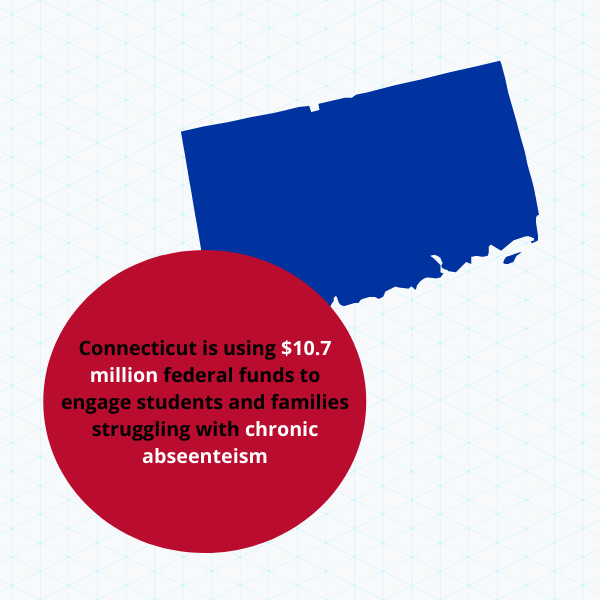The Connecticut State Department of Education (CSDE) launched the Learner Engagement and Attendance Program (LEAP) with $10.7 million in federal relief funds. This program is designed to support students who struggled with chronic absenteeism and disengagement from remote learning during the 2020-21 school year. Funding is being distributed across 15 priority districts to contract support personnel who will go directly into homes to engage with families and students. The goal is to help students return to school regularly and assist families with placement in summer camps and learning programs.
We are spotlighting this practice because research has documented that chronic absenteeism influences students’ long-term success in school. Since the pandemic disrupted students’ engagement and attendance patterns, this investment is an evidence-based approach to re-engage students for COVID-19 recovery.









